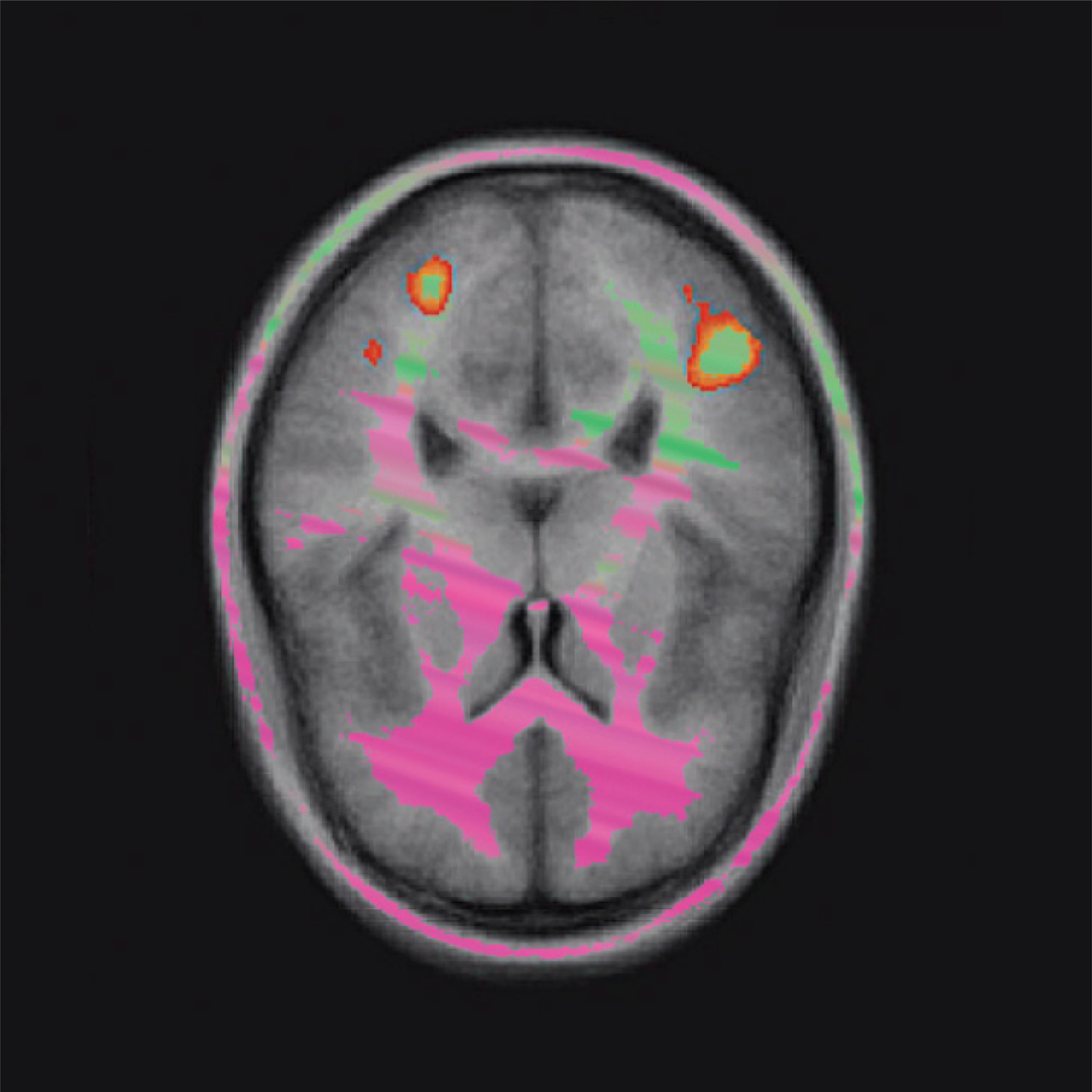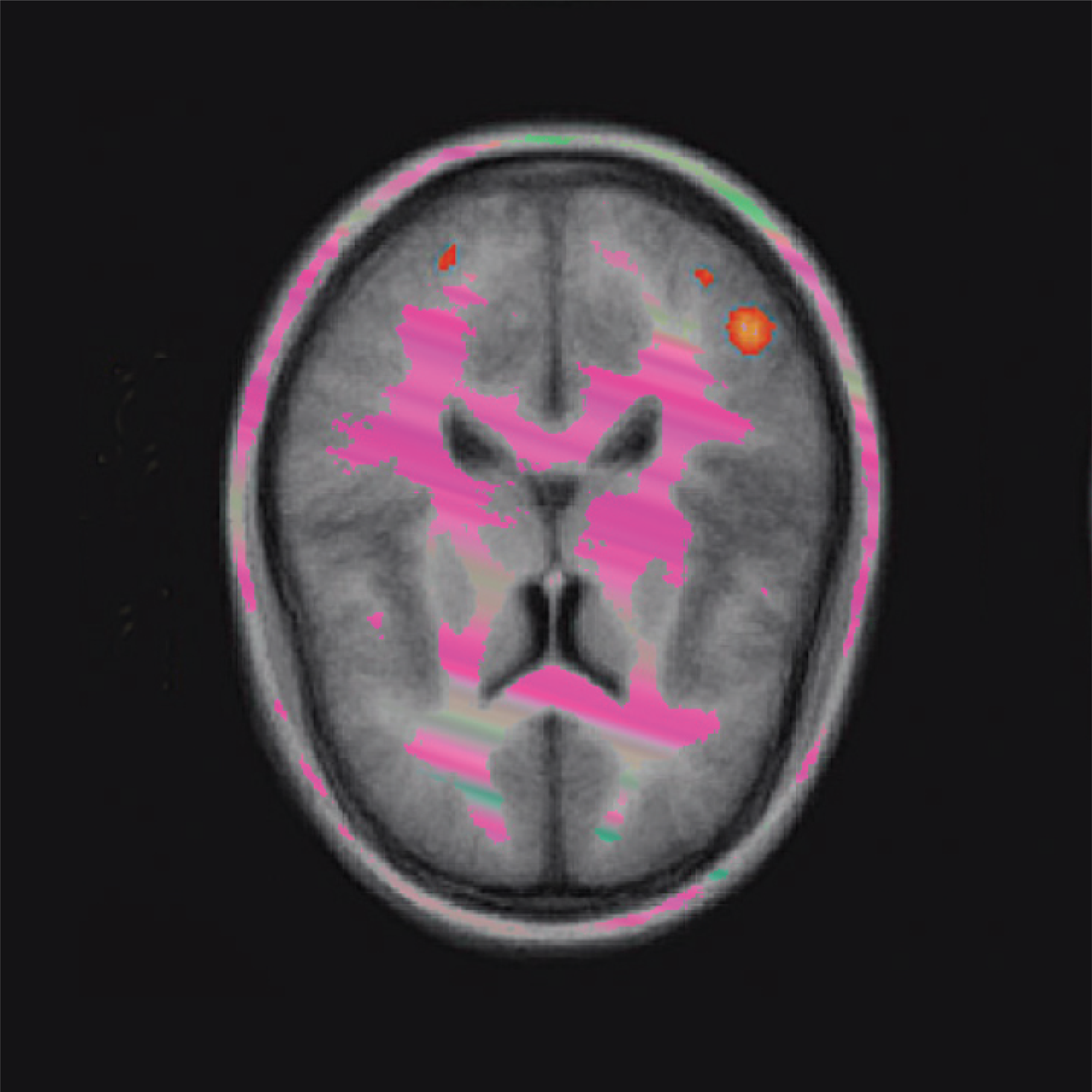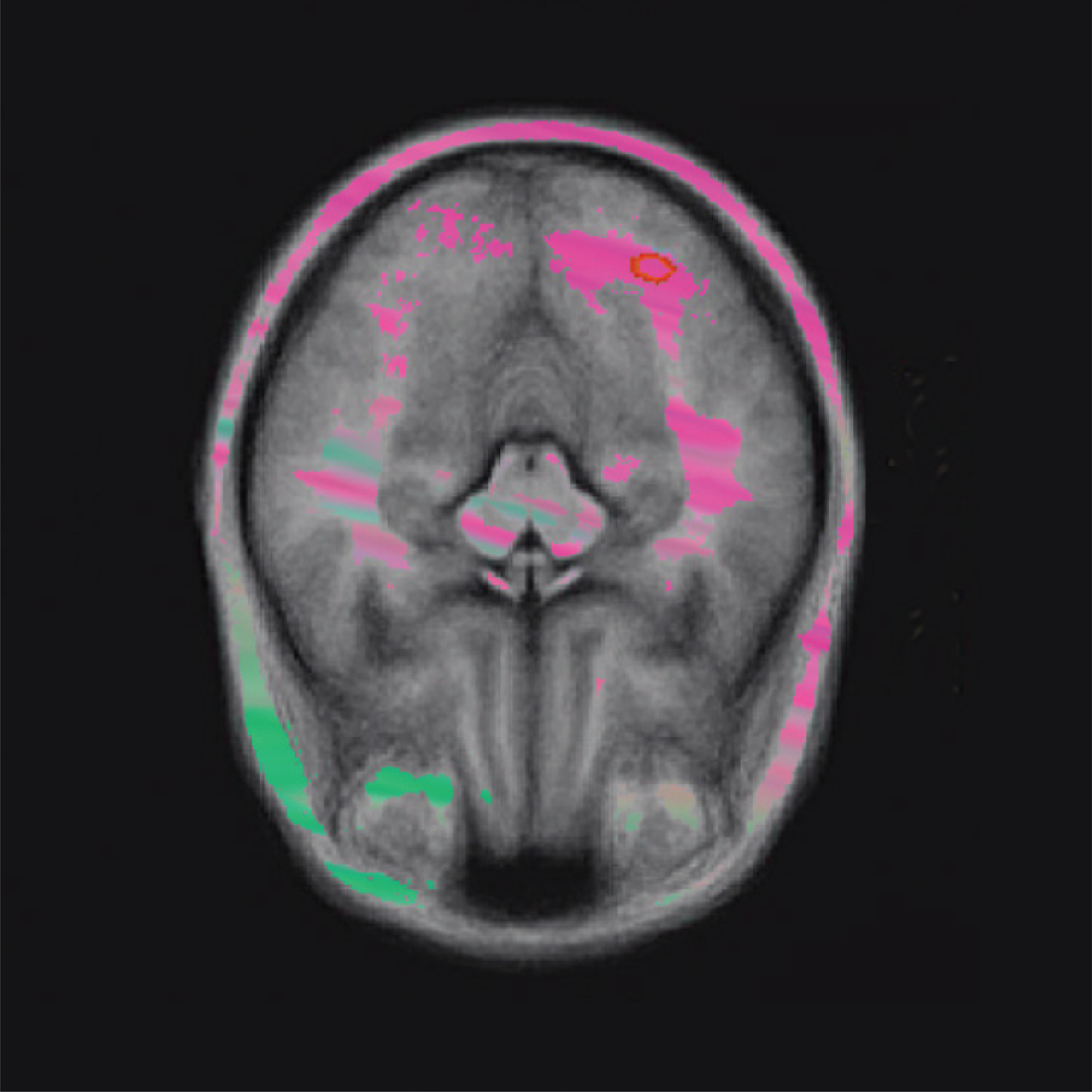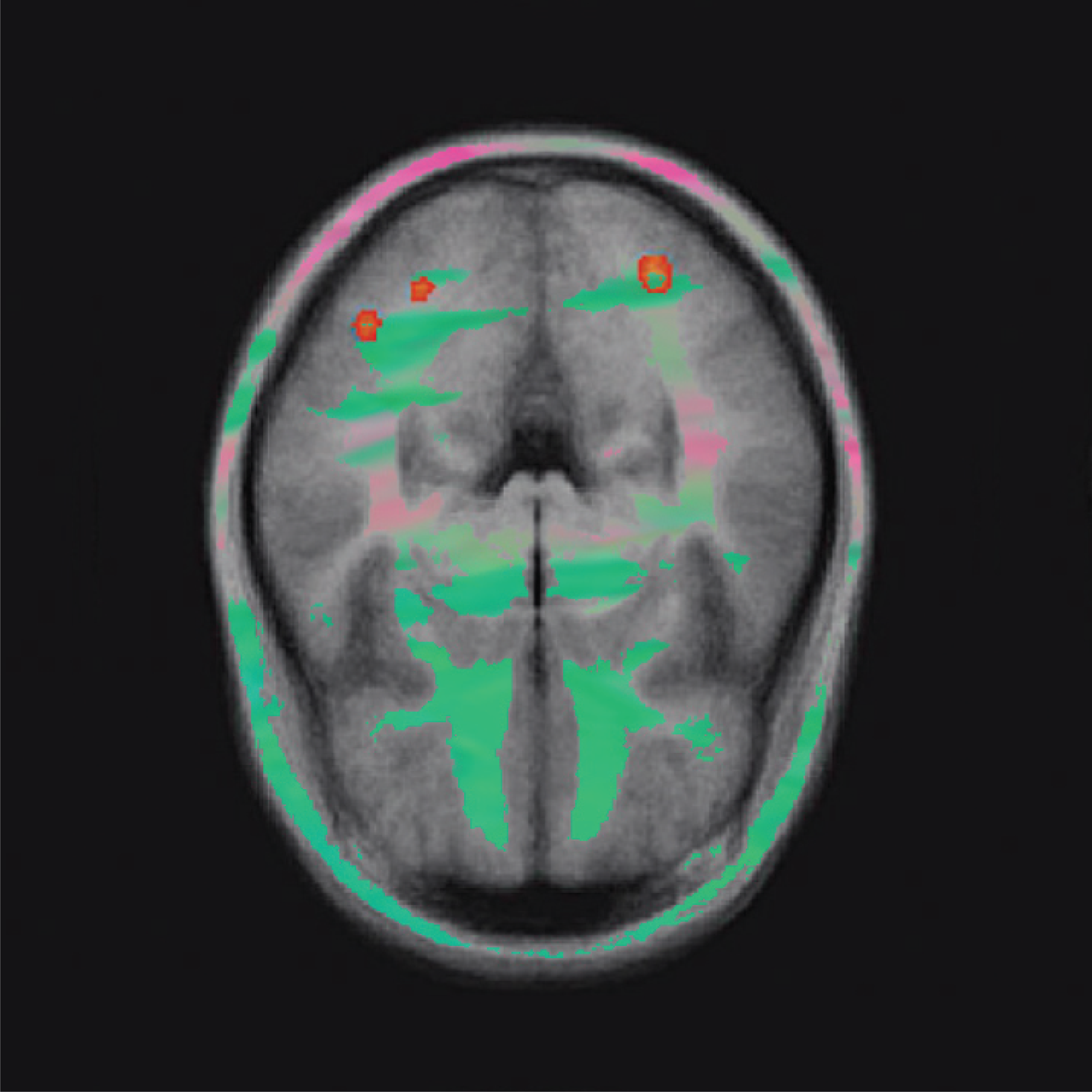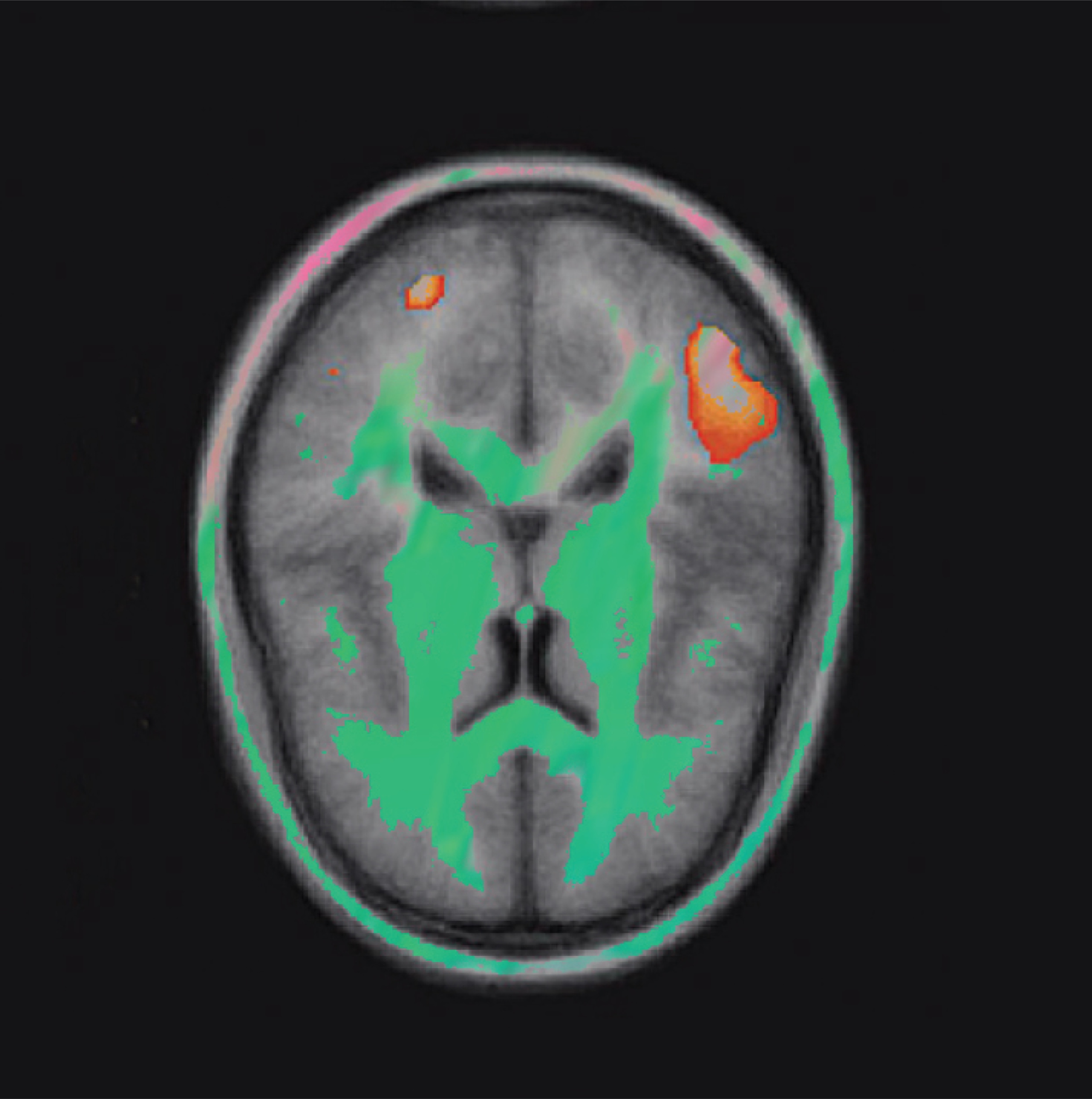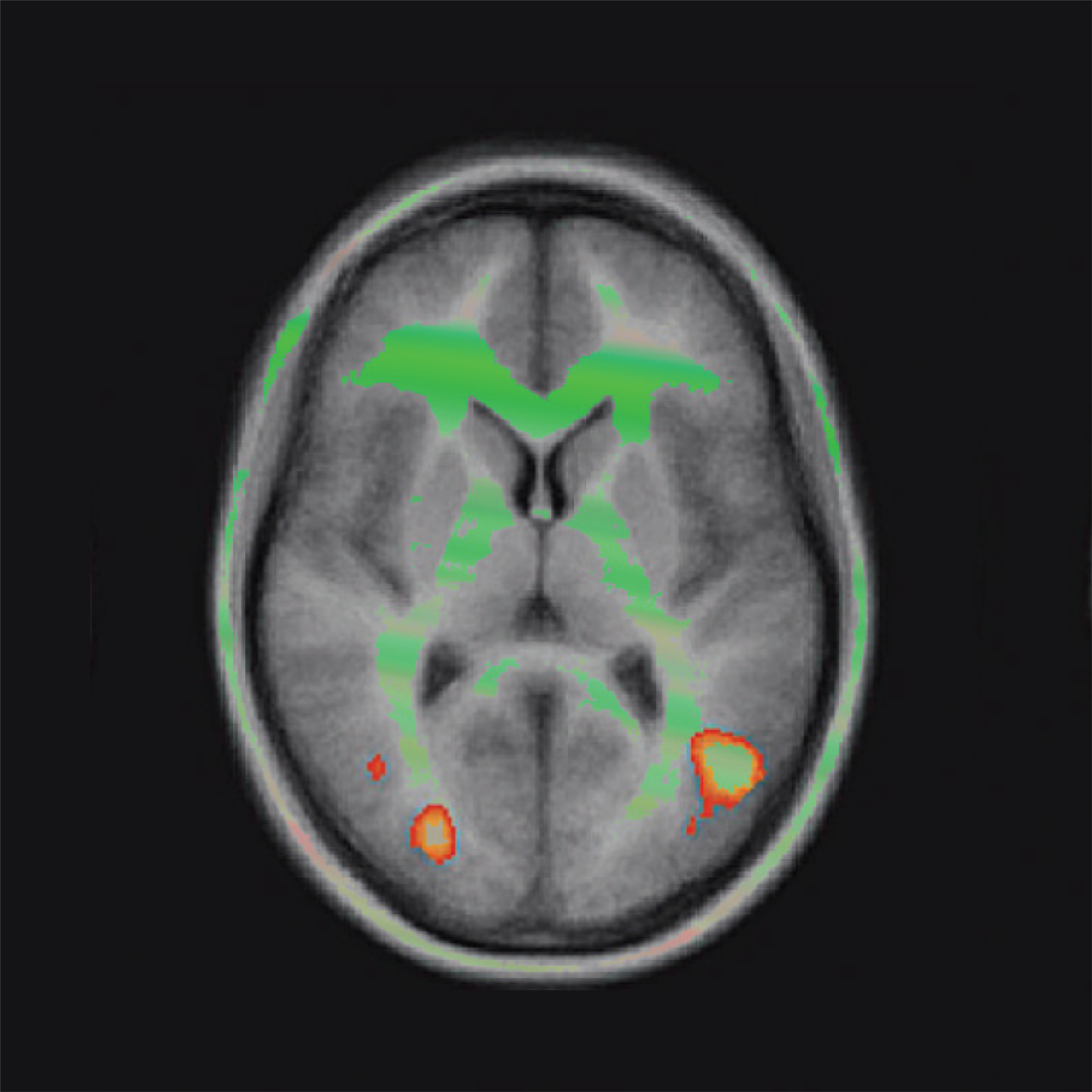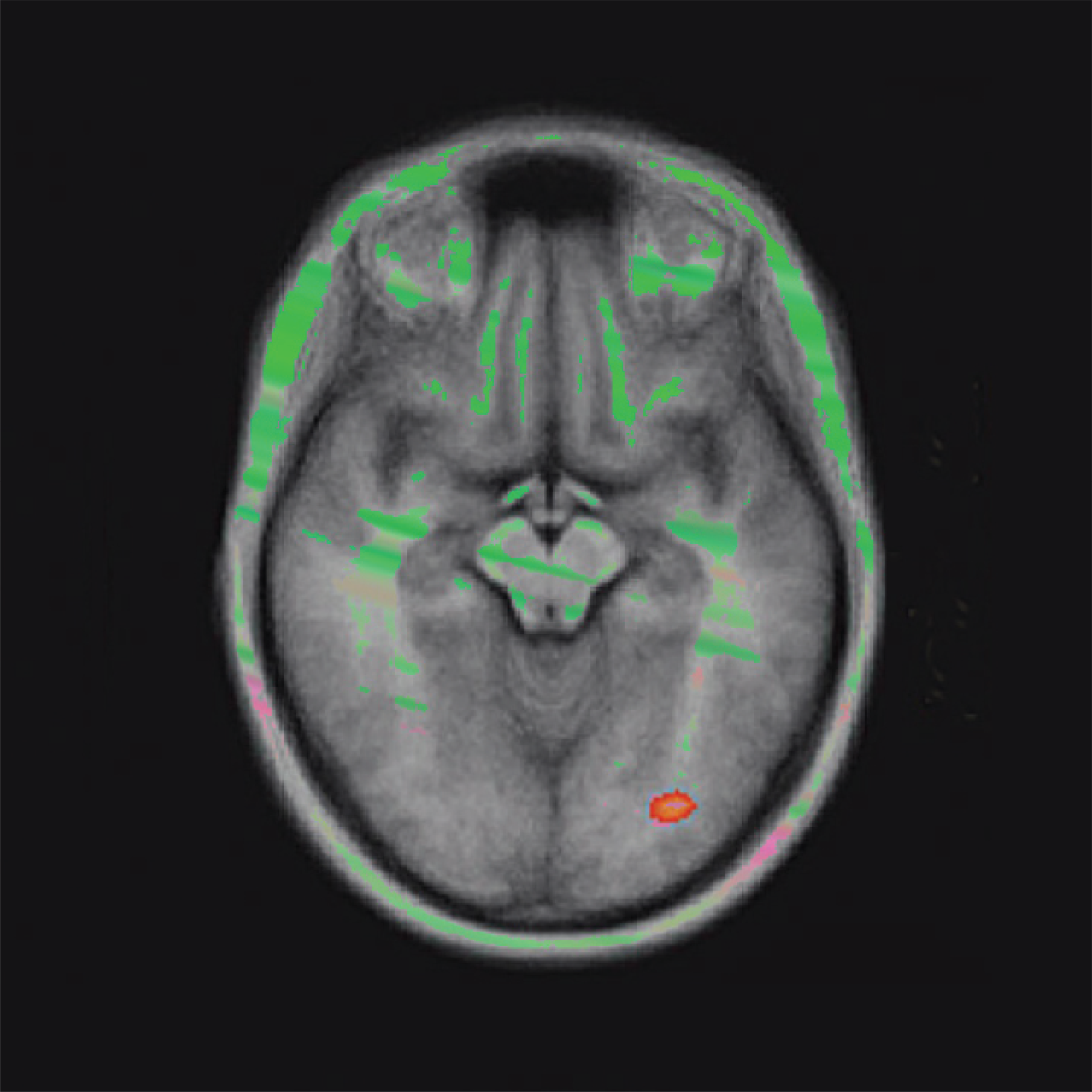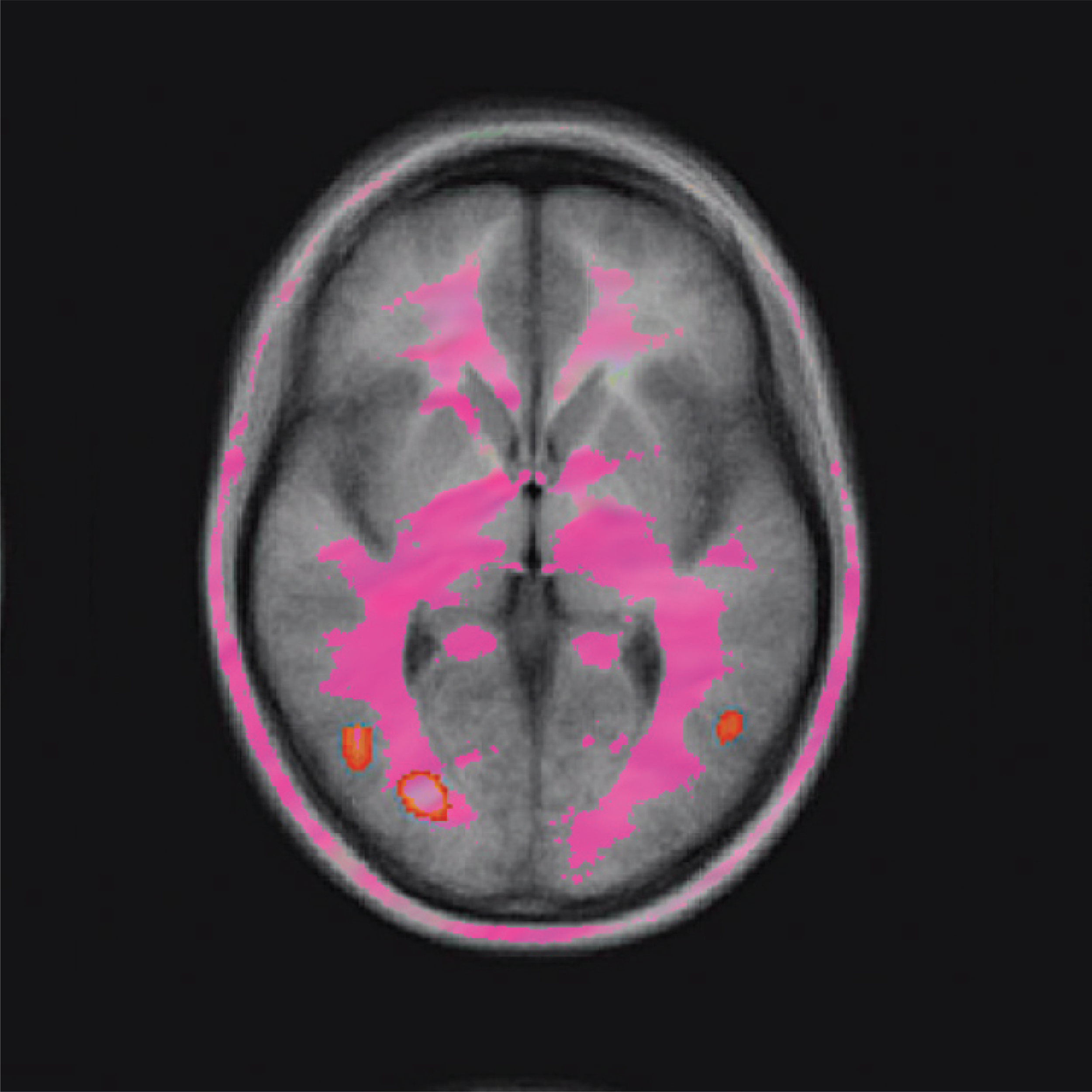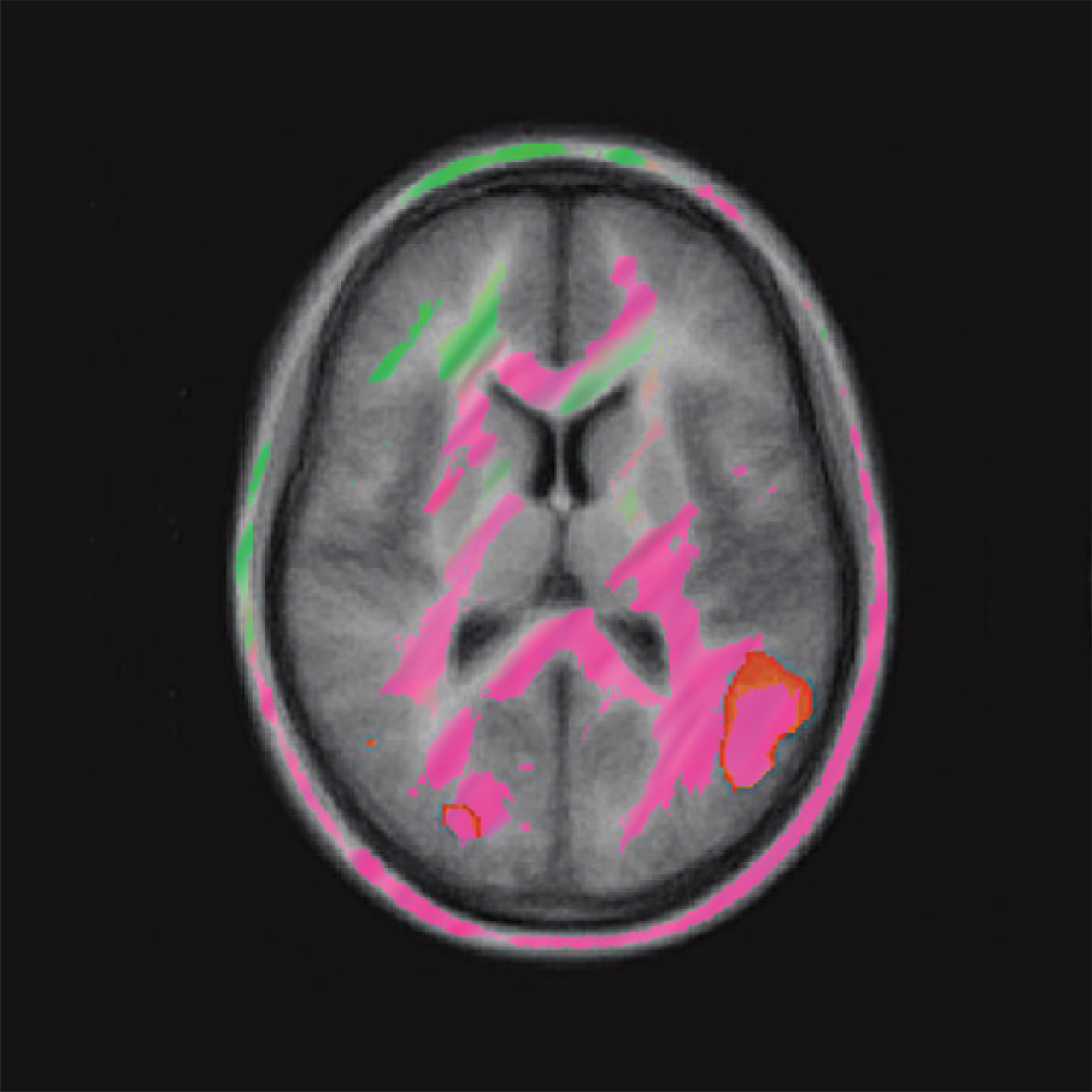The Neo-phrenology of fmri
By Laurence O’Dwyer
“The human brain has a memory as archaic and troublesome as the tales from Ovid. Computers do not surpass brains or vice versa, but certain vendors of silicon would like us to think that our brains will soon be redundant. Their vision is that of a Skinner box.”
WRITING IN The Psychological Review in 1948, Edward Tolman—one of the seminal figures of twentieth century psychology—said that his colleagues were misguided in likening the nervous system to a “telephone exchange” with calls coming in from sense-organs and messages going out to muscles. He went on to parody the dogma of the time by saying that it sounded like the brain was shouting at an operator: “Hold that connection; it was good; and see to it that you blankety-blank well use it again the next time these same stimuli come in.”[1] No doubt Tolman’s review was tongue-in-cheek, but the point was that a telephone exchange is not at all like a brain. For almost a century now, we have had the same problem with computers. The analogy of the brain as computer has been worn day in, day out for so long that it is as threadbare as a professor in a tweed jacket smoking a pipe with patches at the elbows.
Computers are interesting, useful, and ever-evolving creations. They can do plenty of things that humans are not good at, or likely to have an interest in. They can also be inventive in ways that humans have yet to grasp; the strategies developed by AlphaGo, the program that beat the world’s best Go player, were previously unthought-of in the annals of that venerable game.[2] This is all to the good, but it is more nuanced than a simple case of artificial intelligence trumping human intelligence. Entities lie on a scale from bright to dim; whether they are artificial or not is largely irrelevant, but the idea of the superiority of artificial intelligence certainly helps companies to sell us more talking candle-sticks. Traffic lights are also a form of artificial intelligence but we don’t hear much about traffic lights in the world of AI. That’s because consumers don’t buy traffic lights.
In the domain of creative writing, algorithms have progressed no further than writing mediocre haiku—although I recently saw a rule in a poetry competition that forbade the use of any algorithm for generating an entry. Which leads one to wonder how such a rule might be policed. You could lock all the poets into a room for the duration of the competition—or, something which comes much closer to the heart of AI—you could simply place them under constant surveillance.
But if we want to develop an algorithm that can write prize-winning literature perhaps we should first study poetry in more detail. A recent neuroscience paper attempted to do just that when participants were asked to read quatrains of poetry presented on a screen that was visible to participants while they were lying inside an fMRI scanner.[3] Areas of the brain that were activated during the poetry-condition were compared to areas that were activated during a control-condition, which was the reading of mundane sentences. The results consist of a list of anatomic structures that are implicated in ‘experiencing beauty’. Is this really meaningful? I would argue, no. It is a genuine effort to record changes in blood flow in the brain when reading different types of texts, but it is as wide of the mark as an aid to understanding beauty as Buckminster Fuller’s description of man as “a self-balancing, twenty-eight-jointed adapter-base biped, an electro-chemical reduction plant, integral with the segregated stowages of special energy extracts in storage batteries, for subsequent actuation of thousands of hydraulic and pneumatic pumps, with motors attached; 62,000 miles of capillaries, millions of warning-signal, railroad and conveyor systems; crushers and cranes. . . and a universally distributed telephone system needing no service for seventy years if well managed.” The problem of the mechanization of biology began with Descartes and seems to end, once again, with a telephone system. As Lewis Mumford has pointed out in The Myth of the Machine,[4] Fuller’s descriptions are superficially precise, but they lack one key component, the slightest hint of the nature of human beings. The same problem applies when the authors of the paper studying the direct effects of reading poetry on blood flow in the brain conclude that their experiments “shed new light on the complex but ordinary processes of experiencing beauty.”
Another lab went a step further and scanned participants while they were asked to “generate poems spontaneously.”[5] A “panel of experts” then rated the work for technical facility and innovation. The ultimate finding: “quality of poetry was associated with divergent connectivity patterns in experts and novices, centered on the medio-lateral prefrontal cortex (for technical facility) and the intra-parietal sulcus (for innovation).” They concluded that they had found “a mechanism by which experts produce higher quality poetry.”
No doubt, I have deliberately selected extracts that do not present contemporary neuroscience at its finest. This is not to ridicule the field nor to say that poetry is beyond study. Algorithms are wonderful and essential for processing and analyzing fMRI data – but they are not wonderful for generating hypotheses about poetry. The conclusions of the studies presented here are short-sighted at best and downright silly at worst. Note that it is the conclusions that are problematic, not the data or the results. Historically, scientists have been known for their restrained and circumscribed conclusions. On presenting the world with a description of the DNA double-helix, Watson and Crick famously noted that “it has not escaped our notice that the specific pairing we have postulated immediately suggests possible copying mechanism for the genetic material.” The glut of fMRI research that verges on or strays into neo-phrenology is typified by hyperbolic conclusions that are appended to data that may be accurate and precise measurements of biological phenomena.
It is also perfectly true to say that there are incidents of hyper and hypo-activation of localised brain areas in specific conditions. When looking at faces, the fusiform gyrus usually shows less activation in autism relative to neuro-typicals. This can lead to difficulty when trying to read a facial cue like a smile or a frown. This kind of knowledge may help researchers to develop therapies that might alleviate the distress that can result when someone finds it difficult or impossible to understand the emotional cues that form an integral part of everyday interactions.[6]
But the appreciation of beauty is simply too vague a neural concept to be of much use. As a human, or cultural concept, the opposite is true. “The human soul needs beauty more than bread”; on this point, I am in agreement with D.H. Lawrence. But a number of fMRI papers seem to be succumbing to the notion of a comic strip superhero brain where you zap a poetry-centre to increase creativity. It will be up to each individual to choose how to use the neuro-toys that will soon to be available at relatively low cost—toys like headphones that use transcranial direct-current stimulation (tDCS) to send a current through the brain via stimulating electrodes. tDCS was originally developed for the treatment of patients with brain injuries and psychiatric conditions like major depressive disorder, but it is increasingly marketed as a tool for cognitive enhancement in the general public despite mixed evidence for its efficacy in healthy people. Nevertheless, wealthy, early adopters, may feel that tDCS gives them an edge, just as a driver of a certain brand of car or the wearer of a certain watch feels an edge over his or her non-branded neighbour. But branding, let us remember, originated for the purpose of identifying cows.
The human brain has a memory as archaic and troublesome as the tales from Ovid. Computers do not surpass brains, or vice versa, but certain vendors of silicon would like us to think that our brains will soon be redundant. Their vision is that of a Skinner box.[7] Their dream is to be able to control little humans with cables inserted into their brains that run around inside these boxes. Poetry on the other hand has almost zero economic impact on the world and that is, partly, its strength. As the Polish poet Zbigniew Herbert said, the problem of commercially exploiting genuine tears is a real headache for technologists.
References:
1. Edward Tolman, “Cognitive maps in rats and men”, Psychological Review (1948) 55: 189–208.
2. D. Silver, J. Schrittwieser, K. Simonyan, I. Antonoglou, A. Huang, A. Guez, et al. “Mastering the game of Go without human knowledge”, Nature (2017) 550: 354–359. doi:10.1038/nature24270.
3. C. Gao, C. Guo, “The Experience of Beauty of Chinese Poetry and Its Neural Substrates”, Front Psychol. (2018) 9: 1540. doi:10.3389/fpsyg.2018.01540.
4. L. Mumford, The Myth Of The Machine (1964), http://archive.org/details/in.ernet.dli.2015.214098
5. S. Liu, MG Erkkinen, ML Healey, Y Xu, KE Swett, HM Chow, et al., “Brain Activity and Connectivity During Poetry Composition: Toward a Multidimensional Model of the Creative Process”, Human Brain Mapping (2015) 36: 3351–3372. doi:10.1002/hbm.22849
6. SI Deutsch, CT Raffaele, “Understanding Facial Expressivity in Autism Spectrum Disorder: An Inside Out Review of the Biological Basis and Clinical Implications”, Prog Neuropsychopharmacol Biol Psychiatry (2019) 88: 401–417. doi:10.1016/j.pnpbp.2018.05.009
7. “Operant conditioning chamber,” Wikipedia (2018), https://en.wikipedia.org/w/index.phptitle=Operant_conditioning_chamber&oldid=869065144
Laurence O'Dwyer holds a PhD from Trinity College Dublin. He has been a research fellow at Goethe University, Trinity College Institute of Neuroscience and the Donders Center for Cognitive Neuroimaging. His writing has won a number of awards including a Hennessy New Irish Writing Award, the Patrick Kavanagh Award for Poetry and the Yeovil Prize for Poetry. His collection, Tractography (Templar, 2018), received the Straid Collection Award.

